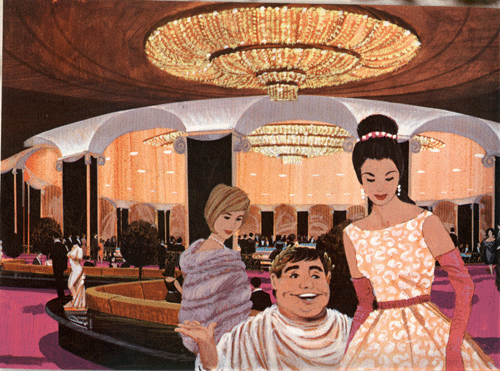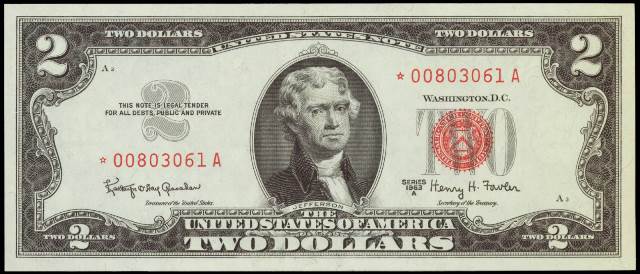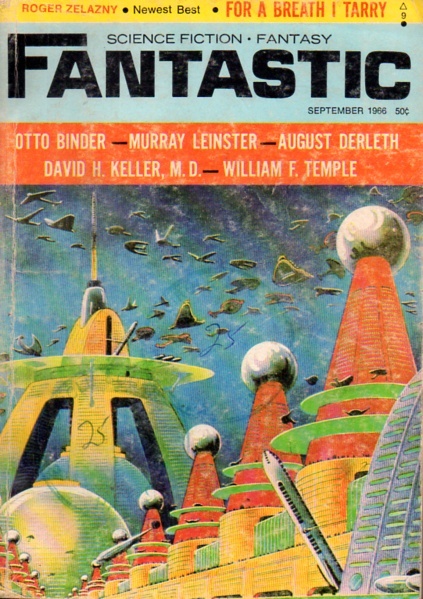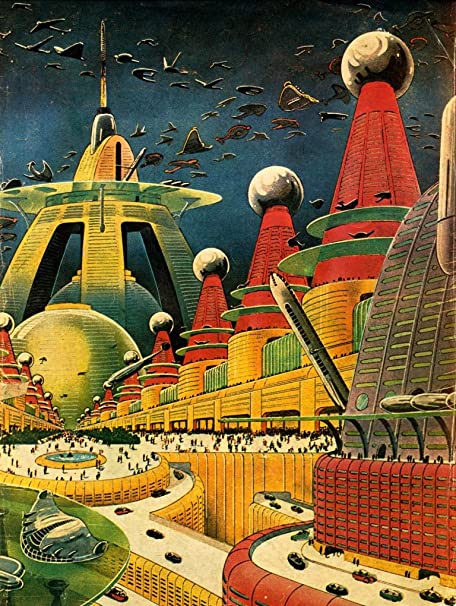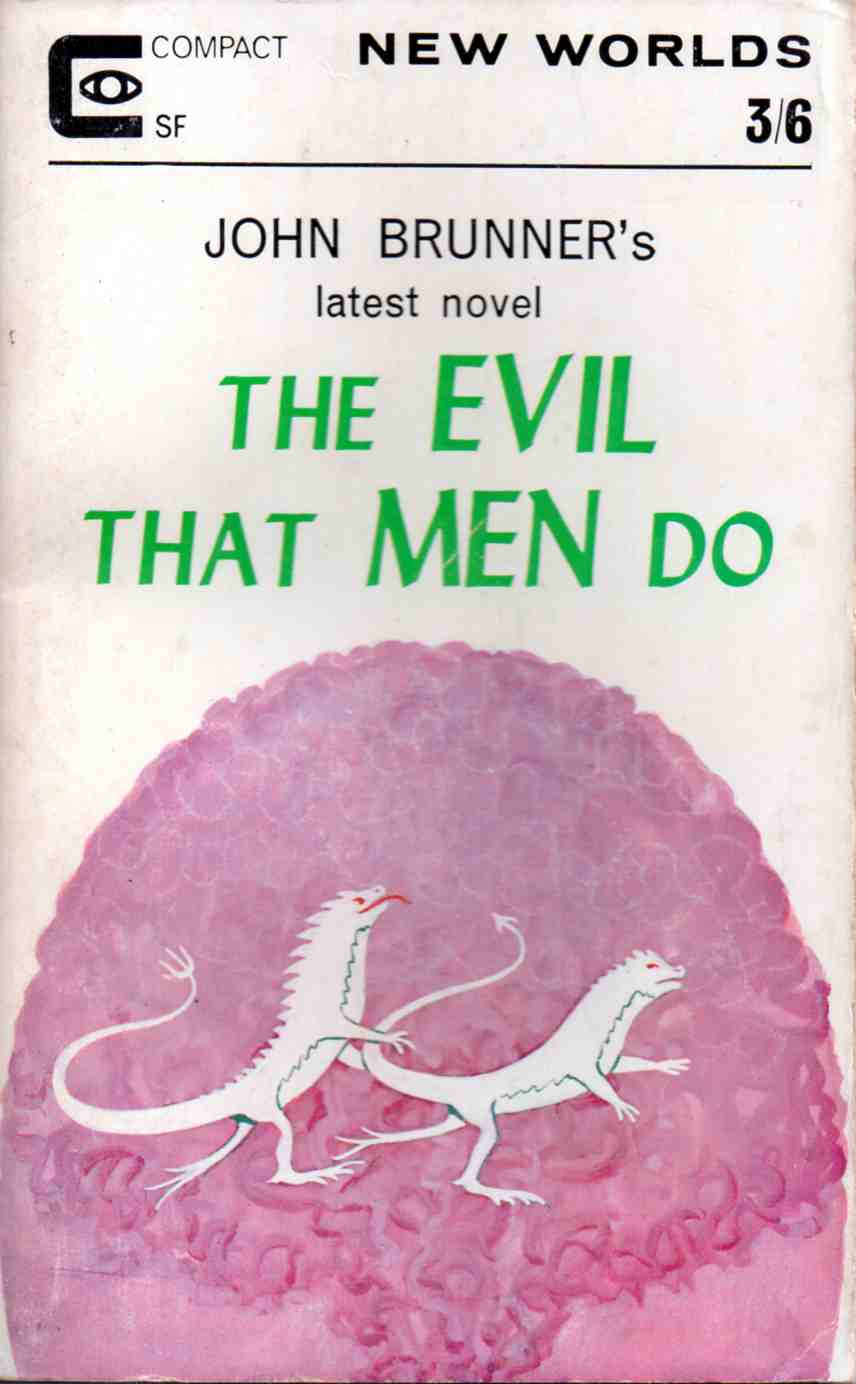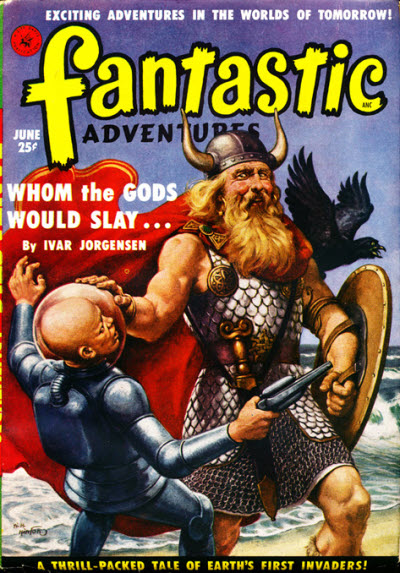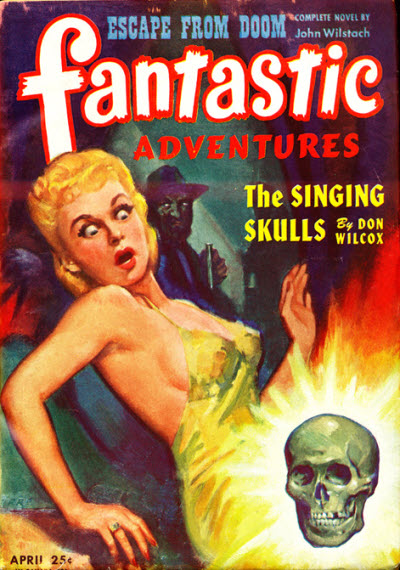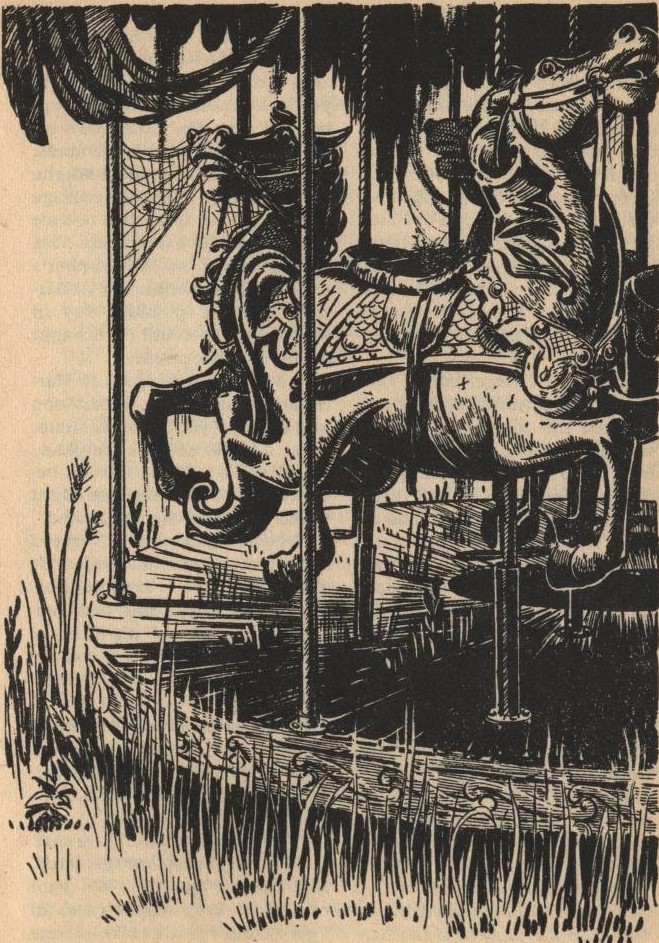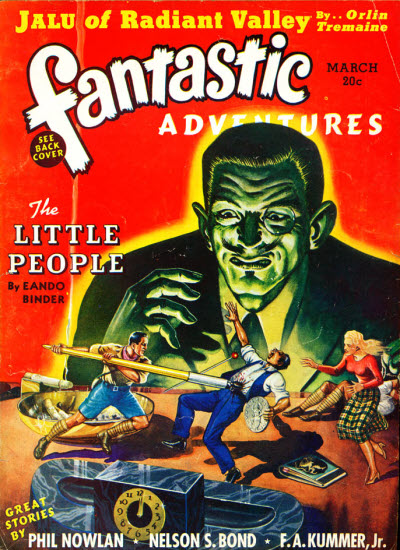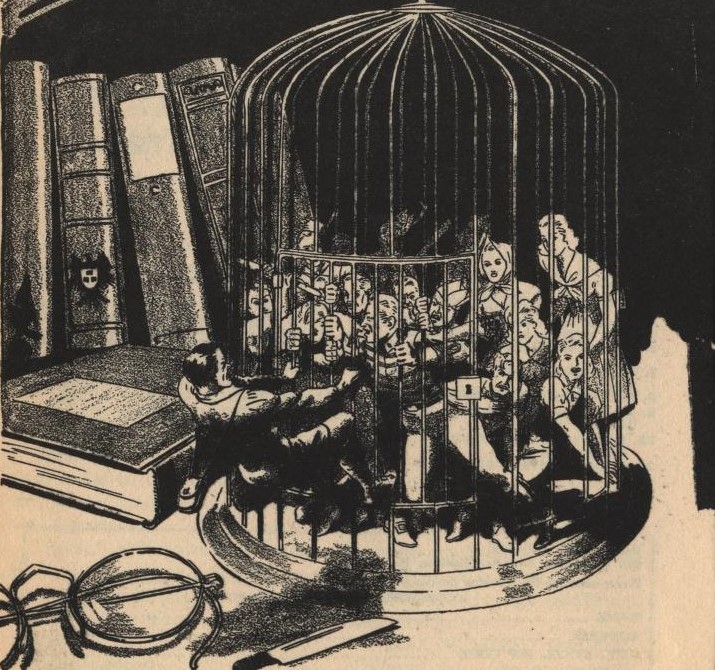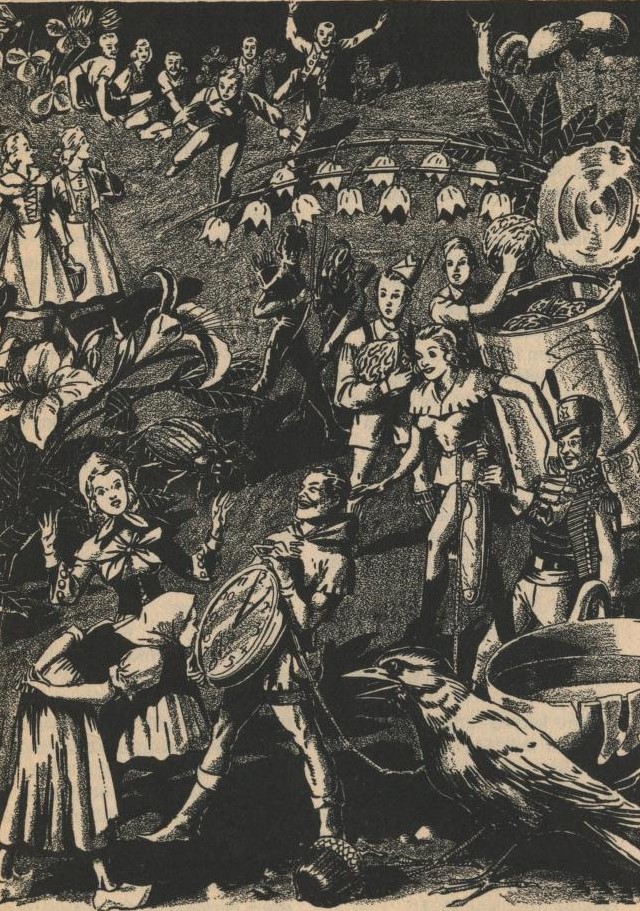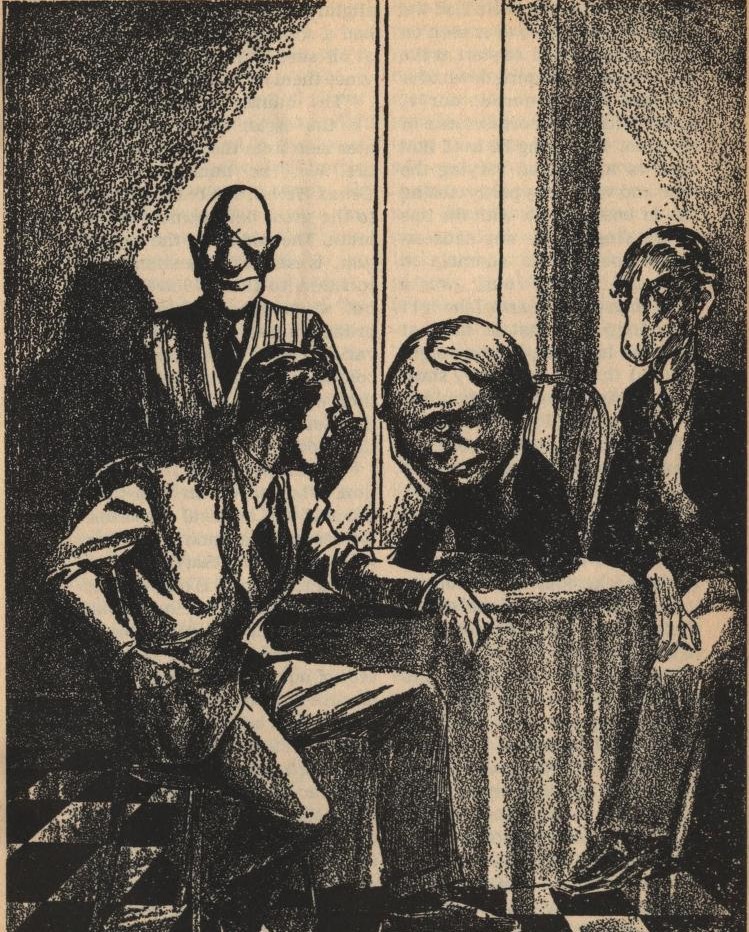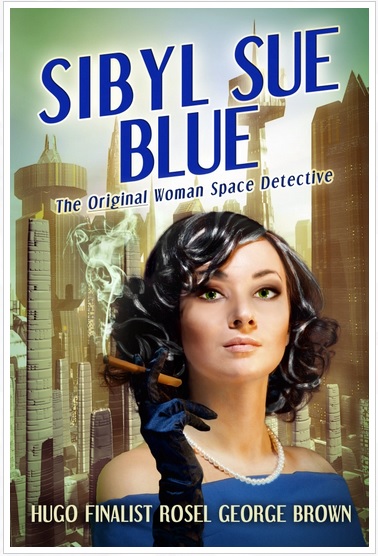
by John Boston
Samuel Johnson described second marriages as the triumph of hope over experience. It is tempting to say something similar about changes of editor at Amazing. But that impulse is at least postponed by the upbeat mien of this July issue.

by Johnny Bruck
That sky is about as blue as any I've seen on a magazine cover, and more importantly, the cover goes some way to answer the cry for a good cover by Johnny Bruck, whose hackneyed spaceships and guys with guns have become so tiresome on recent issues. This one is a bit cartoonish, but at least it’s clever and amusing—a spaceport scene with some impressive-looking spacecraft, but the people on the ground have eyes only for the bright yellow futuristic automobile, with huge tailfins, a transparent dome over the passenger compartment, and whitewall tires. Oh, it has side fins too. Maybe it flies.
The magazine’s contents also lean in a promising direction. Almost half of the magazine (70 of 144 pages, excluding the front and back covers) is devoted to the first part of Robert Silverberg’s serialized novel Up the Line. It’s rare for magazines to give that big a chunk of available space to a serial installment, but it makes sense in a bimonthly magazine. As a side benefit, it leaves less room for the reprints, which take up only 27 pages. The book review column is back, with substantial reviews by William Atheling, Jr. (James Blish) and editor White. The letter column is here again, and the promised fanzine review column has now appeared, nine pages worth, by John D. Berry. White’s editorial says that the fan feature in Fantastic will be reprints of selected fanzine articles. The guest editorials in Amazing will be gone—the editorial spot’s going to be his. It all gives a sense of an energetic editor getting a quick start at implementing his desires.
A more dubious innovation is the new typeface. Multiple typefaces are nothing new at Amazing, but Silverberg’s serial, Leon Stover’s article, and the book and fanzine reviews and letter column are set in a tiny typeface that challenges my ill-made eyes (see the glasses in my photo?). Microscopic type for things like letter columns is an old tradition—just check your copies of the Hugo Gernsback Amazing if the silverfish haven’t gotten to them—but for this much of the magazine it spells headache for me and I suspect many others.
Up the Line (Part 1 of 2), by Robert Silverberg
The biggest deal in this issue is of course Robert Silverberg’s serialized novel Up the Line. Silverberg, formerly a capable journeyman magazine-filler, has in recent years become a much more powerful and original writer. In just the past two years he has produced four novels that put him in a different league entirely than did his earlier work: Thorns, To Open the Sky, Hawksbill Station, and The Masks of Time, with several more out or on the way this year.

by Dan Adkins
Per my practice, I will hold off reviewing and rating Up the Line until it is finished. But a quick peek reveals that it is a time travel story, told in the first person by a young man at loose ends who joins the Time Couriers—not the Time Police, the Couriers’ nemesis—and that it is a considerable departure from the relatively serious recent works mentioned above. Parts of it suggest that the author wrote with the stage in mind. The vaudeville stage, that is. E.g., as the protagonist explains to his new friend the Time Courier why he abandoned his budding career as law clerk to a Judge Mattachine:
“My uncle is Justice Elliott of the U.S. Higher Supreme Court. He thought I ought to get into a decent line of work.”
“You don’t have to go to law school to be a law clerk?”
“Not any more,” I explained. “The machines do all the data retrieval, anyway. The clerks are just courtiers. They congratulate the judge on his brilliance, procure for him, submit to him, and so forth. I stuck it out for eight days and podded out.”
“You have troubles,” Sam said sagely.
“Yes. I’ve got a simultaneous attack of restlessness, weltschmerz, tax liens, and unfocused ambition.”
“Want to try for tertiary syphilis?” Helen asked.
“Not just now.”
So Mr. Silverberg appears to be having a good time. Reading a little further confirms that he also seems to be trying to offend everyone in sight, which may explain why this new novel by a fast-rising author is appearing in the field’s lowest-paying magazine, rather than in the more stately mansions of Pohl, Ferman, or JWC, Jr. In any case, I look forward to completing these scabrous revels.
Only Yesterday, by Ted White
Editor White’s Only Yesterday is a more somber time travel story, in which the ill-at-ease protagonist Bob approaches a young woman as she gets off a train, asks if he can walk with her, says he’s a friend of a friend (she suggestibly supplies the friend’s name, and he agrees), and she invites him in for refreshments and to meet the family. He hits it off with her and her brothers and her parents, and offers to tell her fortune—a futuristic vision which turns into nightmarish war. She’s shocked and disturbed, and he quickly says he was making it up, offers a more palatable vision, and beats a hasty retreat. Revelation of who he is and why he’s there follows. It’s smoothly written and well visualized, but the ease with which Bob inserts himself into the family setting is too implausible to overlook. Still, nice try, very readable, three stars.
Hue and Cry, by Bob Shaw
Bob Shaw’s Hue and Cry is about as far as one can get from his very well received Light of Other Days. It's a cartoonish story in which a spaceship full of humans lands among sentient carnivorous reptilians who think of them only as food, scheme to eat them all, and are thwarted with a silly gimmick. Two stars, generously.
Poison Pen, by Milton Lesser
The reprints in this issue are a mostly malodorous batch from the doldrums of the mid-1950s. The best that can be said for them is that they don’t take up much space.
Milton Lesser’s Poison Pen (from Amazing, December 1955) is a silly botch of a story. For thirty years, humanity has been under the thumb of the extraterrestrial Masters. Now they’ve left, and people are dancing in the streets. The main thing we know about the Masters is that they made people keep diaries and read from them in neighborhood gatherings, and that practice continues. Why? Dr. Trillis says it’s because the Masters taught everyone “from the cradle” to be compulsive exhibitionists (how?) so they could control people, “and the older generation either had to go along with it or feel left out.” So people ought to stop with the diaries and the readings, he says. But they don’t. Worse, they start stealing other people’s diaries and making fake entries in them—false confessions of having been “co-operationists.” Executions begin. Our hero helps Dr. Trillis escape and they wind up in a settlement of people “who somehow haven’t been contaminated,” in New Jersey.

by Paul Orban
If the description sounds sketchy and incoherent, that’s because the story is. It’s an insult to the readers, pretty clearly dashed off without a thought of anything but a quick check. One star.
No Place to Go, by Henry Slesar

by Erwin Schroeder
Henry Slesar’s No Place to Go (Amazing, July 1958), by contrast, is at least a competent piece of yard goods. A crack team of astronauts goes to the Moon, takes a look outside, and sees Earth blow up, leaving them alive but stranded. Shortly, some of the astronauts are blowing up too. But wait—April fool! It was all a test! They were drugged with a hypnotic chemical, visions planted in their heads while they slept! The captain then tells the guy who didn’t blow up that he’s now second in command, and he’ll be going to Mars. It's cliches wrapped around a gimmick, but unlike Lesser’s story, it doesn’t reek of contempt for the readership. Three stars, generously.
Note that in our crude rating system, what I’ve just described as “cliches wrapped around a gimmick” gets the same grade as White’s much more capable effort. Just remember that there’s a lot of space between 3.0 and 3.9.
Puzzle in Yellow, by Randall Garrett

by Leo R. Summers
Randall Garrett’s Puzzle in Yellow (Amazing, November 1956) is a trivial gimmick story on that ever-popular theme, the Stupid Alien. Extra-terrestrial Ghevil is scoping out Earth for invasion and pillage by the “hordes of Archeron.” He wants to check out an isolated military installation, so he finds a remote building with big walls and turrets, and figures he’s found what he’s looking for. He kills the first person he sees emerge from the building, and disguises himself in the man’s uniform. He tries to enter and is shot dead. Take a wild guess what the installation he tried to enter actually is. The yellow of the title, by the way, refers to Ghevil’s blood. Two stars, barely.
The Pendant Spectator, by Leon E. Stover
Leon Stover’s “Science of Man” article this month is The Pendant Spectator, a phrase he got from Samuel Johnson’s novel Rasselas, which means, more or less, someone with a view from a height. “Spaceship Earth” is also invoked. Stover seems to have abandoned his project of educating us all about anthropology. Here we have a protracted editorial on the necessity for humanity to get its act together and get right with the biosphere, limiting population, developing energy sources (i.e., the sun) that will neither pollute the atmosphere like fuel combustion nor overheat the place like nuclear power, engaging in international cooperation, accepting a degree of coercive regulation in these and other causes, etc. It’s hard to argue with any of it, but it’s also hard to imagine that the SF readership is who needs to hear it, so it seems a bit pointless. This series seems about ready to die a natural death. Two stars.
Summing Up
So the harbingers seem to be blowing in the right direction, even if the actual fiction contents, possibly excepting Silverberg, are not much changed from the recent norm. “Looking good” would be premature, but “looking like it might look good” would fit. Or—as I’ve said more times than I can count about this magazine—promising.

![[June 6, 1969] Blue Skies (July 1969 <i>Amazing</i>)](https://galacticjourney.org/wp-content/uploads/2024/06/amz-0768-civer-490x372.png)

![[March 4, 1968] Everything Old is New Again (<i>New Writings in SF-12</i> & <i>Famous Science Fiction</i> Issues #4-6)](https://galacticjourney.org/wp-content/uploads/2023/02/Cover-396x372.png)




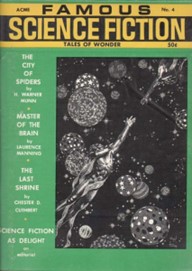
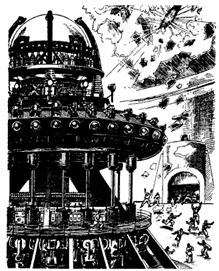
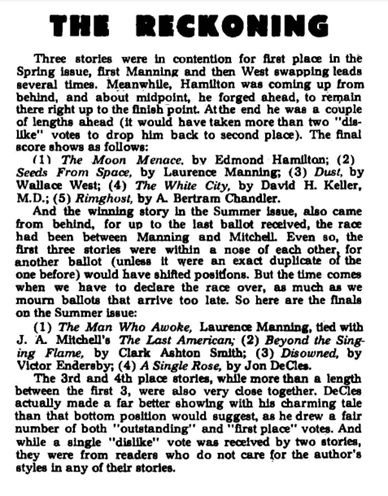
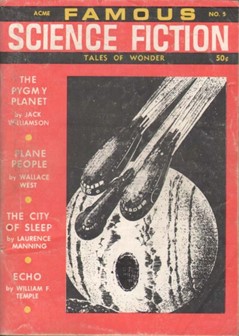
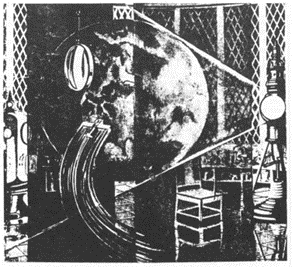


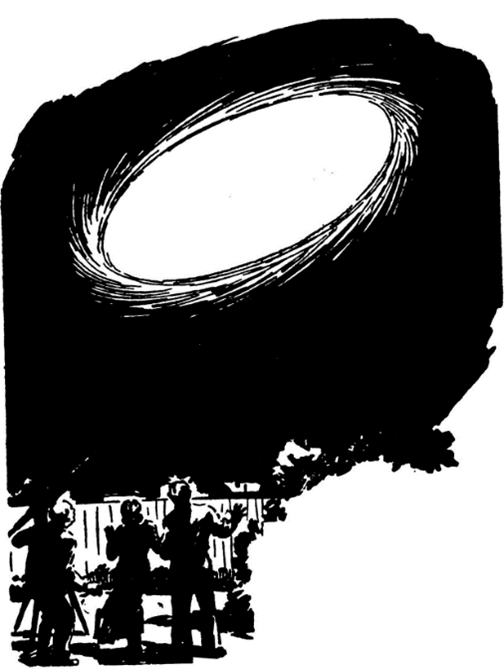
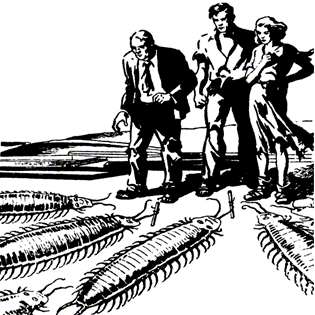

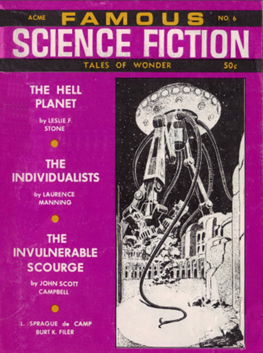

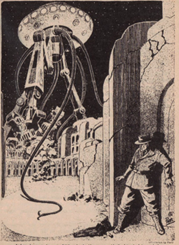
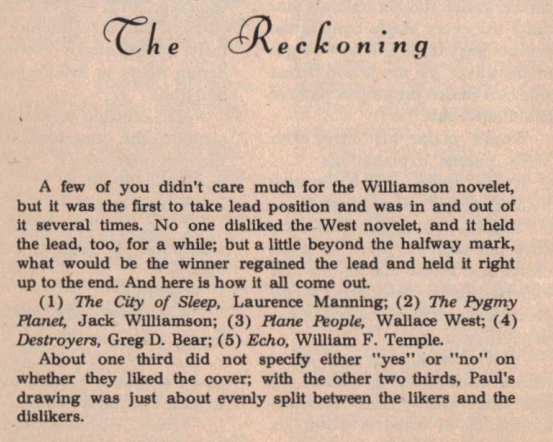

![[August 10, 1966] Dollars and Cents (September 1966 <i>Fantastic</i>)](https://galacticjourney.org/wp-content/uploads/2021/08/FANTSEP1966-3.jpg)


